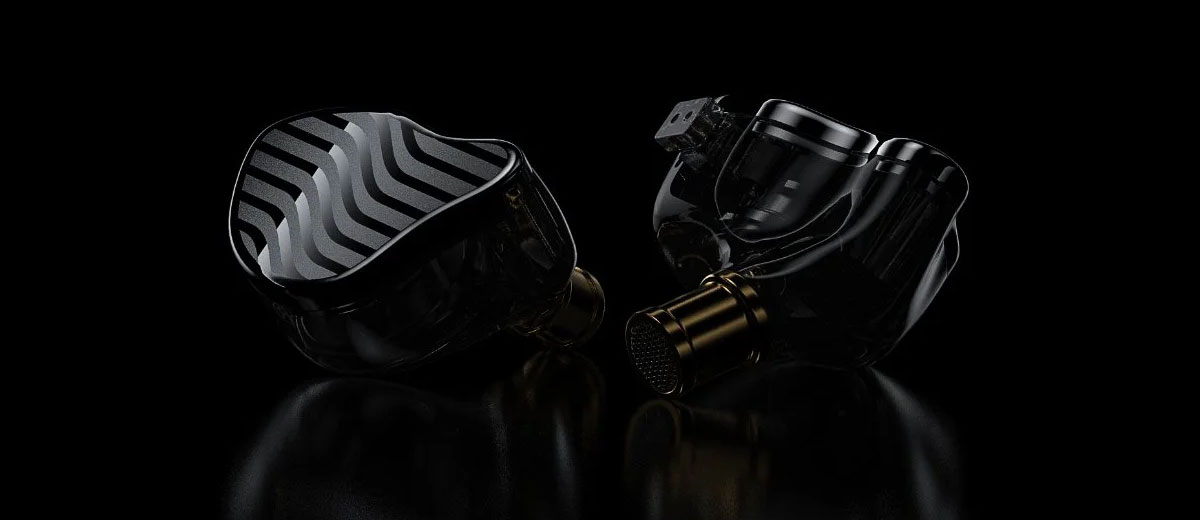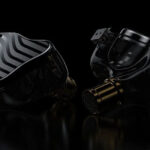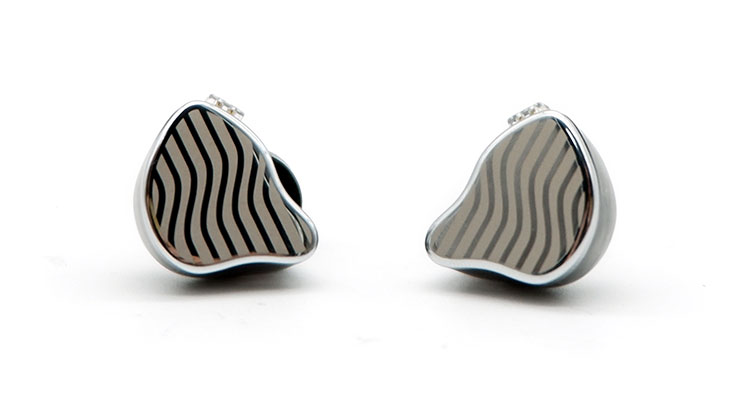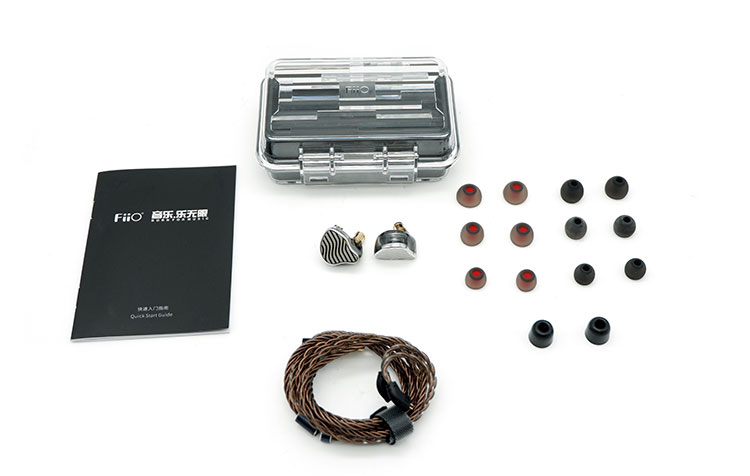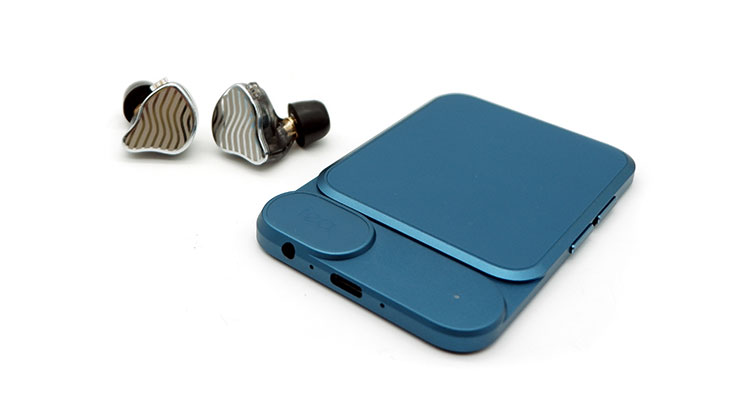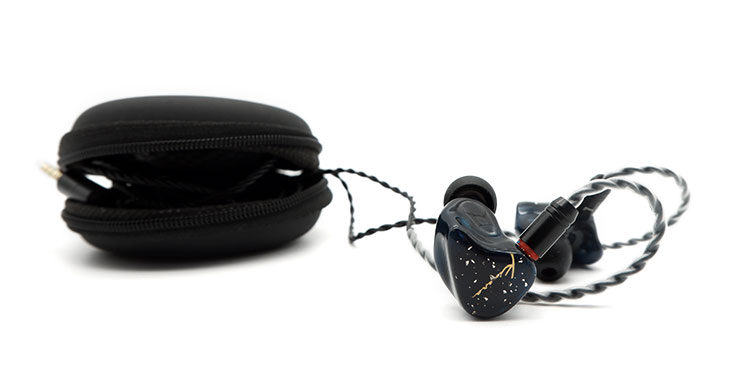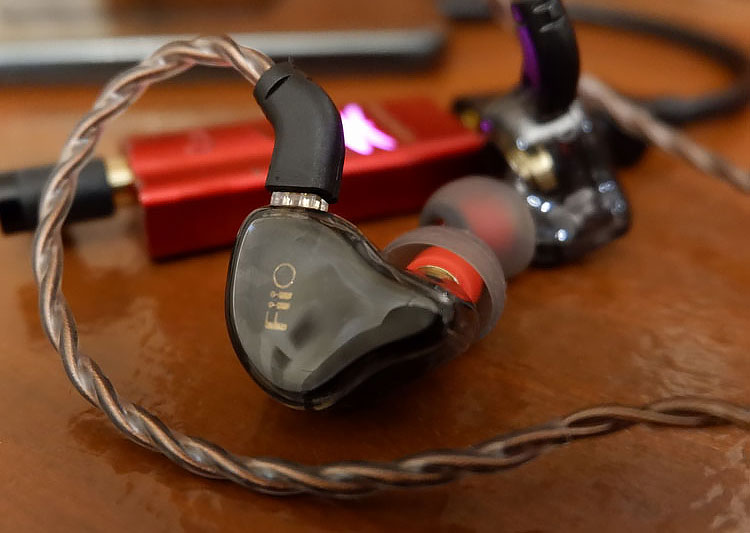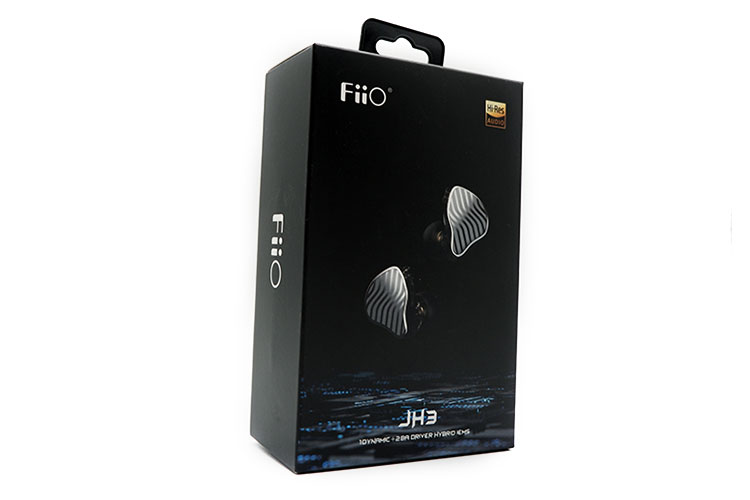We review the FiiO x Jade Audio JH3, which is a new entry-level hybrid single 13.6mm dynamic and dual BA driver universal IEM. It is priced at $59.99
Disclaimer: This was sent to us as a sample for our honest opinion. Headfonics is an independent website with no affiliate links or services. We thank FiiO for this opportunity.
To learn more about the FiiO products we have covered on Headfonics you can click here.
Note, this article follows our latest scoring guidelines which you can read up on here.
Like me, I’m sure many people wouldn’t immediately recognize the name Jade Audio. However, I’m sure that everyone would know the name of its parent company, FiiO.
As of late, FiiO has been pushing the boundaries of its abilities to create higher-performance IEMs, such as the FH9, FA7 & FD7. However, when FiiO started, they were the lower-cost alternative to more popular brands, and they have not forgotten this tradition.
Therefore, FiiO launched a subsidiary brand called Jade Audio, which is aimed at creating cost-effective but excellent products for the younger generation. It is with this goal that FiiO launched the JH3 in partnership with the Jade Audio brand.
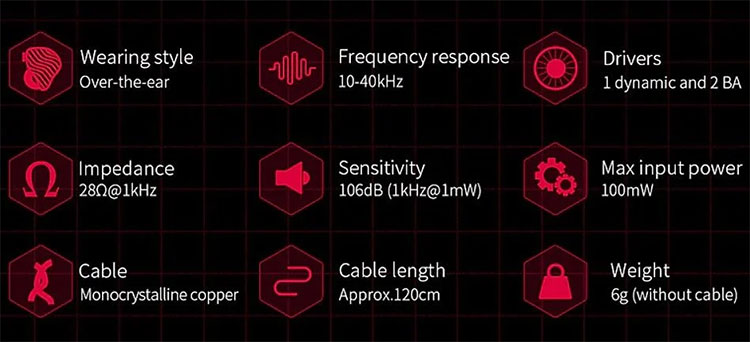
Tech Highlights
While the JH3 has a relatively modest price tag, the JH3 is equipped with a fairly ambitious triple-driver system. The bass is handled by a 13.2mm dynamic driver which is powered by a high magnetic flux driver coil capable of 20% higher magnetic flux density than usual magnetic circuits. This allows the JH3 to have a full but controlled bass and midrange.
Aside from the dynamic driver, the JH3 also has 2 balanced armature drivers that are designed to handle the treble range. The BA drivers are positioned along the tube of the IEM to reduce distortions, particularly with treble notes.
Design
At this price point, I’ve become used to seeing mostly plastic shells on IEMs, particularly at this price point. And while the JH3 doesn’t deviate too much from this, the shell has an aluminum faceplate with a design that’s inspired by SCHOTTIS shutter patterns when the sun shines through. The stripes and the entire design are then protected using a PVD coating to ensure longevity.
Like most modern IEMs, the JH3 has detachable cables that are connected using a 2-pin 0.78mm connector. Each connector has an ear hook design that allows the cable to loop around your ears, where the ear hooks are properly wrapped with a PVC coating to help maintain the contour of the wires. The cables themselves are very soft and pliable, which translates to less microphonics.
Comfort & Isolation
While there is some aluminum on the face of the IEM, the shells of the IEMs themselves are primarily made with plastic. Being made of plastic makes the shells less susceptible to being physically too cold or too hot. However, plastic shells also make them a lot lighter than most IEMs, but also slightly less durable.
Once the IEMs are inserted in your ears, they typically isolate well enough, making your surroundings inaudible once the music starts playing. The shallower insertion of the IEMs also ensures that they will not be uncomfortable for those who are less used to having IEM ear tips inserted deep into their ear canals.
Ear Tips
Despite being a simpler IEM, the JH3 comes with 3 types of ear tips. The first one is the smaller bore silicon ear tip, then there’s a larger bore ear tip, and then finally there is a pair of foam ear tips. Each type of ear tip comes in 3 sizes, except with the foam tips, with only 1 pair included in the box.
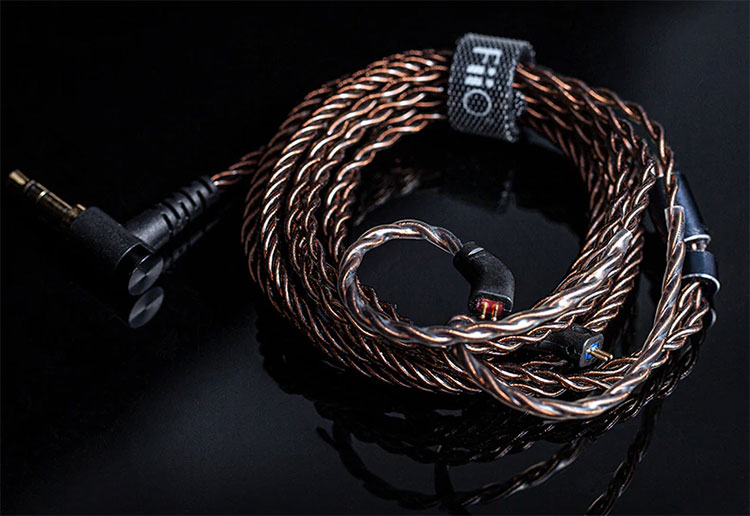
Stock Cable
Having a replaceable cable comes with the convenience of possible cable rolling for some sonic changes, or for easier serviceability if the cable breakers.
However, the cable that comes with the JH3 turns out to be pretty good, as it’s made with pure copper, which is then coated with PVC, and each cable is braided to make a tight but soft braid making cable management relatively simple.
The cable is terminated with a 2-pin connection, where there is a curve on the IEM side that will contour around your ears. Then there is a splitter along the cable that also has an adjustment slider to customize the length of the splitter. Then finally, the source end of the cable is terminated with a standard 3.5mm TRS connection.
Packaging & Accessories
Given the budget price point, I would forgive FiiO/Jade Audio for sending the JH3 with a more modest unboxing experience. Instead, they opted to scrimp more on the box, only sending the JH3 with a thin cardboard box without much foam, instead of a thicker one with lots of foam inserts.
It is the accessories that come with the JH3 that are surprisingly comprehensive for the price point. It comes with FiiO’s durable standard clear carrying case and plenty of ear tips to give the user some tuning options right out of the box. The final piece in the jigsaw is a quick start guide.
Sound Impressions
The sound impressions were made with the JH3 using the stock foam ear tips that came with the package.
Bass
One of the benefits of having a driver dedicated to the bass and midrange is that it can be made to have a lower cut-off frequency. And this is the case with the JH3, where the sub-bass rumble remains prominent and consistent with the rest of the frequency spectrum.
Going into the mid-bass region, there is a tasteful midbass hump, where there is a good sense of physicality with each drum hit. However, what I find lacking is the ultimate control of the driver, since there seems to be a certain lack of texture and hollowness of drums. Fortunately, the bass doesn’t bleed into the midrange, so the rest of the frequencies seem to be left intact.
Mids
Compared to the bass, the vocal range tends to be more recessed and comparatively thinner. However, the vocal presentation remains generally accurate, allowing the power behind the vocalists to remain apparent while being generally honest about the presentation.
There isn’t a huge amount of euphony when it isn’t present in the track in the first place, while vocal textures are a smidge glossed over.
Midrange instruments such as pianos and guitars have a similarly thinner timbral tilt. This results in making it a bit more difficult to convey the size of the body of the guitar, making most guitars sound similar.
Notes from pianos similarly lack that sense of girth and weight. Fortunately, there is a sense of texture making it easy to pick out details with each strum and each keystroke.
Treble
The thinner timbral coloration continues into the treble region, but this translates to having a generally more detailed treble presentation. This means cymbal harmonics will sound a bit edgy though still having an accurate sense of timing, which makes each hit clear and consistent.
I would also consider the rest of the treble range as honest, which means that the JH3 can become sibilant if the particular track that you’re listening to tends towards sibilance. But with more well-recorded tracks, the treble energy on the JH3 perfectly toes the line between sibilance and lethargy.
Soundstage (including imaging)
Most of the images are confined within my head with the JH3, so I wouldn’t say that it’s particularly wide. Images also tend to stay within one layer of the soundstage, so there isn’t much in terms of layering and delineation.
As for the images formed within the soundstage, the images tend to stay in the extreme left or right of the soundstage, or the middle of the soundstage. So while there isn’t much going on between the center and the extremes, the center image that’s cast by the JH3 has a better level of focus.
Synergy
Efficiency
The FiiO JH3 is rated at 28Ω with a sensitivity of 106dB/mW, so it doesn’t take much to get the JH3 going. I was able to easily power the JH3 using any amplifier, with the Hidizs S3 Pro, I only needed to reach 60% for my normal listening levels. With the iBasso DX200, I required about 90/150 to reach my normal listening levels.
So I would say that the JH3 needs very little power to get going, and I did not worry too much about the output ratings of the amplifiers that would be used with it. Instead, I would worry about nosier amplifiers where the noise floor could become easily audible through the JH3.
Pairings
Given the more modest power numbers, I tried to power the JH3 off of the Hidizs S3 Pro. Despite the S3 Pro having enough power to run the JH3, the more bloated bass on the S3 further magnified the thinner midrange and treble range on the JH3.
I then moved on to the iBasso DX200, and the tonal balance became more neutral comparatively. However, the thinner midrange and treble still skew the presentation to a darker tilt, masking most of the detail retrieval capabilities of the JH3.
Surprisingly, the most interesting pairing that I found for the JH3 is with the Khadas Tea, which is a MagSafe-certified portable DAC/Amp. This pairing lifts up the midrange and treble presentation of the JH3, giving it a better tonal balance while maintaining the more energetic bass presentation.
Ear Tips
What came default with the JH3 is a pair of small-bore silicon ear tips, which has a less elevated bass presentation than the foam ear tips. Detail retrieval becomes a bit more difficult with the silicon ear tips because they tend to make images seem a bit more dispersed.
Moving over to the larger bore ear tips, the bass is even flatter, while the treble peaks become relatively more emphasized. This allows the soundstage to be even wider, but this comes at the cost of a well-defined imaging presentation and a greater scooped midrange response.
So I ended up doing most of my listening tests with the foam tips that were provided. The foam tips allowed the images in the soundstage to come into better focus, allowing some layering and depth. Also, this gives the JH3 a bit more control over the drivers, as they tend to reduce distortion.
Select Comparisons
Kinera BD005 Pro
$49
Technical
Both IEMs use a hybrid system with a dynamic driver and a balanced armature driver implementation. The key difference here is the BD005 Pro uses 1 less BA driver. The dynamic driver on the BD005 Pro is also significantly smaller at just 9.2mm.
Both IEMs have the same 28Ω measured impedance, but the BD005 Pro has a higher sensitivity at 108dB/mW. This makes the BD005 Pro slightly easier to drive, but both IEMs can easily be powered by most sources, so I don’t think this is a huge factor.
Design
While both IEMs are primarily made from plastic, the shells on the BD005 Pro feel more substantial because it’s 3D printed instead of just injection molded.
Consequently, the shells on the BD005 Pro are also thicker and embedded with glitter that serves as accents to the entire design of the shell itself. Both IEMs also have nozzles, so I’m not so worried about ear tips falling off the shells too easily.
Both IEMs have equally soft cables, but the cable that comes with the BD005 Pro is finished with a black PVC coating. Both cables have the same 0.78mm 2-pin termination, but the one on the BD005 Pro has an additional mic interface that allows the user to use the mic button to play/pause the music.
Of course, the cables are always replaceable, so the same aftermarket cables can be used for both.
Performance
Since both IEMs have a hybrid design, I was expecting them to sound similar. However, the BD005 Pro has a comparatively more coherent overall tonal presentation with a bass presentation that is more in line with the rest of the frequency spectrum.
Although the BD005 Pro comparatively has less bass, it has a more glossed-over, but also a more controlled bass response. The vocal range on the BD005 Pro, on the other hand, is pushed a bit more forward allowing the power behind vocal performances to be more readily apparent. Similarly, the girth and size of pianos and guitars are more apparent with the BD005 Pro.
The treble presentation on the BD005 Pro is more forward, lending physicality to cymbal hits and horns. Despite having a more prominent and similarly edgy treble presentation, the BD005 Pro stays safely away from being sibilant, which also means that it has comparatively less air.
This translates to the BD005 Pro having a smaller soundstage presentation. However, the images within the soundstage are given are more accurately placed to my ear and lacking in delineation.
FiiO FD1
$59.99
Technical
The FD1 is that it only has 1 driver, which is a 10mm dynamic driver that’s coated with beryllium. Although the driver is comparatively smaller, the beryllium coating adds rigidity to the driver, which prevents driver flex which may cause distortion.
Having an impedance of 32Ω and a sensitivity of 109dB/mW, the FD1 plays louder, meaning it’s easier to drive. However, the differences are just in the order of 3-4 notches on the iBasso DX200’s volume dial, so I would say that they’re practically equal in terms of power requirements.
Design
Despite being under different branding umbrellas, the design language of the 2 IEMs makes it immediately evident that they come from the same stable. Having a similar-looking plastic IEM shell, and even practically the same cable, and the same set of accessories.
The most striking difference between the 2 IEMs is that the FD1 has an all-plastic shell with a celluloid insert accent piece. Aside from this, the 2 IEMs would be hard to distinguish based on their physical characteristics.
Performance
Sonic performance shouldn’t be judged based on how things look, and this couldn’t be more true than with these 2 IEMs. These 2 IEMs have striking contrasts in their sonic presentation. Whereas the FD1 tends to have a more midrange-centric presentation while being comparatively more rolled off at the frequency extremes.
The FD1 has a warmer presentation, allowing vocals to be more full-bodied at the cost of being glossed over. The mid-bass presentation on the FD1 also follows suit by having a similarly elevated midbass which can be described as more rounded and warmer while glossing over details.
I wouldn’t say that the treble on the FD1 is recessed, but it’s comparatively less prominent while having a thicker presentation. This allows cymbals to sound seemingly more natural despite being pushed further into the background. However, it’s immediately apparent that the FD1 is more rolled off, and consequently less airy.
Both IEMs present a similarly sized soundstage, so images don’t go anywhere beyond my head. However, the images formed by the FD1 aren’t as chiseled and instead tend to loom larger while overlapping on each other.
Our Verdict
Despite the much lower price point, the JH3 makes its FiiO pedigree strikingly apparent by having accessories that were only previously available in pricier products in the FiiO lineup. Even the design of the IEM is immediately reminiscent of other FiiO budget offerings.
Sonically, the FiiO JH3 takes the hybrid triple driver setup and allows it to extend well into the frequency extremes. Although the JH3 has a slight midrange dip, the entire frequency range remains generally detailed and textured, only showing hints of sibilance when playing lesser recordings.
FiiO x Jade Audio JH3 Specifications
- Type: In-ear
- Drivers: 1 x Dynamic, 2 x BA
- Impedance: 28Ω @ 1kHz
- Frequency Response: 10Hz – 40kHz
- Sensitivity: 106dB (1kHz@1mW)

